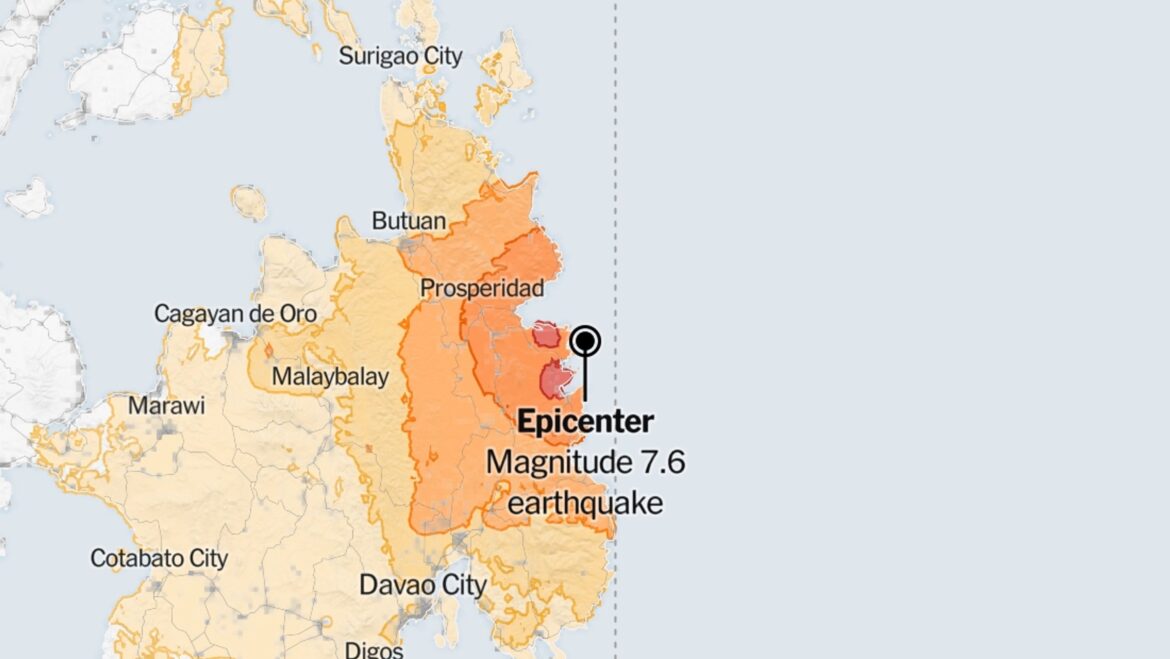The Philippines, an archipelago nation situated in the Pacific Ring of Fire, is no stranger to earthquakes. This active seismic zone, where tectonic plates collide and grind against each other, makes the Philippines vulnerable to tremors that range from barely perceptible to devastating.
Recent Earthquakes and Their Impacts
On December 2nd, 2023, a powerful earthquake measuring 7.6 on the Richter scale struck the southern Philippine region of Mindanao. The tremor triggered tsunami warnings, causing panic and evacuations in coastal areas. Although the tsunami threat diminished, the earthquake caused significant damage to infrastructure, particularly in the Davao region. While reports of casualties are still emerging, the initial assessment indicates a tragic loss of life.
This incident comes just weeks after a 6.7 magnitude earthquake hit the same region on November 17th, 2023. While the November earthquake’s damage was less severe, it served as a stark reminder of the constant threat of earthquakes in the Philippines.
Understanding the Risks
The Philippines’ location on the Ring of Fire exposes it to several earthquake fault lines, including the Philippine Fault Zone and the East Manila Fault. These fault lines are constantly under pressure, leading to the release of energy in the form of tremors.
In addition to tectonics, volcanic activity also contributes to earthquake risks in the Philippines. The archipelago lies along the “Pacific Ring of Fire,” which is home to numerous active volcanoes. Earthquakes can be triggered by the movement of magma within these volcanoes, adding another layer of complexity to earthquake risk assessment.
Preparedness and Mitigation Efforts
Despite the inherent risks, the Philippines has made significant progress in earthquake preparedness and mitigation efforts. The Philippine Institute of Volcanology and Seismology (PHIVOLCS) plays a crucial role in monitoring seismic activity and issuing timely warnings. The government has also implemented earthquake drills and educational programs to raise awareness and prepare citizens for potential tremors.
Furthermore, construction standards have been revised to make buildings more earthquake-resistant. These efforts, along with a strong culture of community support and resilience, have helped the Philippines weather numerous earthquakes over the years.
Lessons Learned and the Road Ahead
Each earthquake presents an opportunity to learn and improve preparedness strategies. The recent earthquake in Mindanao highlights the need for continued investment in infrastructure upgrades and early warning systems. Additionally, strengthening emergency response mechanisms and fostering community resilience remain critical in minimizing the impact of future earthquakes.
While the threat of earthquakes remains a reality in the Philippines, the nation has demonstrated remarkable resilience in the face of adversity. By combining scientific expertise, proactive mitigation efforts, and a strong sense of community, the Philippines is well-equipped to navigate the challenges of living in an earthquake-prone region.
Moving Forward: Building a More Earthquake-Resilient Philippines
The Philippines’ journey towards becoming a more earthquake-resilient nation requires a multi-pronged approach. Continued investment in scientific research and early warning systems is crucial for timely and accurate assessments of earthquake risks. Moreover, stricter building codes and enforcement mechanisms are essential to ensure earthquake-resistant construction practices.
Engaging communities in earthquake preparedness programs and drills is equally important. By educating individuals and families about earthquake safety, the government can empower communities to become first responders in the immediate aftermath of a tremor.
Finally, fostering a culture of resilience and mutual support is critical in enabling communities to recover and rebuild after earthquakes. By promoting collaboration, resource sharing, and mental health support, the Philippines can create a stronger and more resilient society that can withstand the inevitable challenges posed by earthquakes.
In conclusion, the Philippines’ history with earthquakes is one of resilience and adaptation. While the challenges remain significant, the nation’s commitment to preparedness, mitigation, and community engagement paves the way for a future where earthquakes are not synonymous with disaster, but rather a reminder of the unwavering spirit of the Filipino people.


Leave a Reply